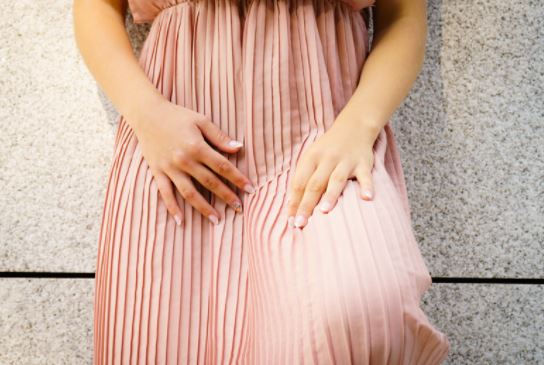It is said that pleats originated from the Egyptians. Over time more and more varieties have been created, leaving many of us wondering how easy or difficult it is to care for them.

Please note that ironing is usually NOT recommended for many types of pleats, even if the care label advises to wash and iron at home or you can also let the professionals take care of the garments.
There are still some types of pleats that are impossible to ever bring them back to the quality of pleats that you had when you first purchased them.
My first TOP TIP when buying a pleated garment is to buy synthetics and polyester pleats. Why? Because they are set in place using chemicals, so they never fall out; these are the easiest ones to look after when caring for them at home.
Always use a very cool iron, even placing a clean cloth between the garment and the iron can also reduce the worry of melting the fabric, even on a cool setting.
What about silk or wool? Silk and wool are natural fibre. Manufacturers would apply a temporary solution to the fabric (for example vinegar). So they look great on the hanger in the shop, but once worn throughout the day, even been caught in the wet, damp or humid weather, your beautiful, neat pleats would have more than likely dropped out.
Once the pleats have dropped, washing and ironing at home can seem an impossible task. Even for us, pro’s, it can take an hour and a half spent on one item!
Unfortunately, the pleats would never be the same as when you bought them.
So, try opting for synthetics or polyester if possible.
Do not be disheartened, always check your care labels first. In some cases, it may well advise you to have them professionally cleaned. If that is the case, bring the garment(s) down to us at Farthings and let us do the hard work for you.
With that being said, there are still some types of pleats that are just impossible to iron back in the right places.
There are 10 different styles of pleats, some are more manageable than others, some are better steering clear of.
Here’s a little guide to just 10 of the most popular pleats:
ACCORDION PLEATS - Machine made knife pleats remain permanent even after washing. Can be cleaned/ironed at home or with us at Farthings.
KNIFE PLEATS- Firmly pressed, handmade facing in one direction. If synthetic or cotton you can do at home, any other type of materials, send to us at Farthings.
GRADUATED PLEATS- Flared knife. Please check the manufacturers care label.
SUNRAY PLEATS- Very popular at the moment. Is made using half a circle of material. Extremely hard to recover the pleats once cleaned, even for us at Farthings. We would have to inspect the garment to see if it was even possible.
CRYSTAL PLEATS- Vey fine knife pleats, found mainly on Tuxedo shirts, 2-3 mm on both sides. For best results, send to us at Farthings.
BOX PLEATS- Full-length pleats, rectangle in shape from top to bottom. Can be difficult to iron, depending on the fabric also.
INVERTED PLEATS- Two knife pleats facing each other. This shouldn’t be too difficult to iron, again it also depends on the fabric.
KICK PLEATS- Inverted pleats that are joined till the hips level. This can also be challenging to iron.
FANCY PLEATS- Pleats in fancy shapes. Can be difficult, depending on the size of induvial pleats and how far apart they are.
SARI PLEATS- (sunray)- Placed in the centre of the garment, thin pleats that flare out to the bottom. These pleats are hand-folded every time the sari is worn.
Even with this information, it can be confusing, my best advice is to read the manufacturers care labels, carefully following their advice. If you are even in any doubt, please do not hesitate to get in touch at either of our Farthings branches in Cambridge and Trumpington,
We would be more than happy to give advice, tips or clean and press your lovely items taking any of the worries away for you. Come and see us at 143 Milton Road Cambridge and 1 Anstey Way, Trumpington. Alternatively, you can give us a call on 01223 755180 or 01223 625310.

Comments